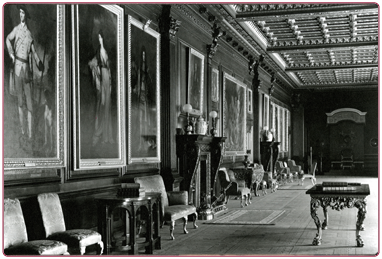Random Palace jottings - What happened to the paintings?

The Palace art collection was outstanding and could rival any great art collections the world over. The wonderful contents of the Palace were disposed of in two sales in 1882 and 1919. The 1882 sale was the one which saw the disposal of most of the art collection, across the world.
Daniel in the Lion’s Den by Rubens sold for £5,145, while the portrait of King Philip VI by Velasquez sold for 6,000 guineas. The portrait of Emperor Napoleon by Jacques-Louis David was bought by the Earl of Roseberry in 1882. In 1812 it had cost Alexander 1,000 guineas (about £1,050). Since 1954 it has been in the National Gallery of Art in Washington.
The 8ft tall painting of Alexander by Sir Henry Raeburn was commissioned in 1812. The painting came into Alexander’s possession when he eventually paid for it! It was sold as part of Alfred, 13th Duke’s sales in 1919 for 3,300 guineas (about £3,465). Recently, Alexander, 16th Duke arranged for it to be purchased from its last owner, Lord Cowdrey for £67,250. It now hangs in Lennoxlove House.
It isn’t known when the painting The Duke of Hamilton’s Grey Racehorse Victorious by John Wooton was sold. It now resides in The Paul Mellon Collection in Yale Center for British Art, unframed. A full-size replica can be viewed in the Banqueting Room at Chatelherault Hunting Lodge. It is in the frame which was designed for the room and the painting.
The collection of manuscripts held by Alexander were sold to the German Government for £80,000. Some were later repurchased by the British Government and are now held in the British Museum.


 Latest Tweets
Latest Tweets 













